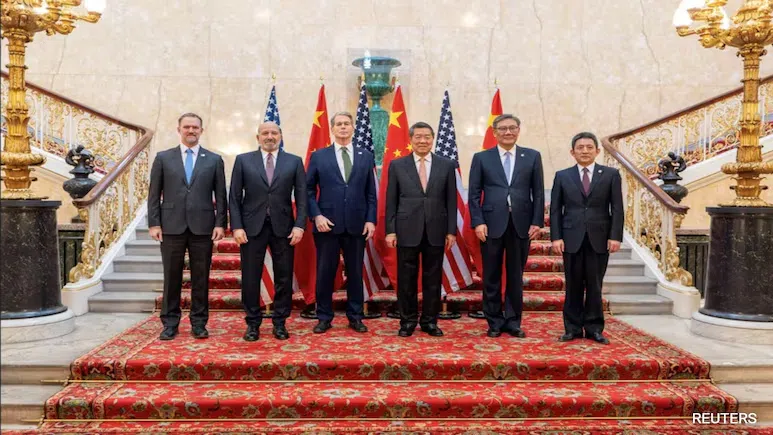US-China Trade Deal Reached: The United States and China agreed to a framework to renew their trade truce after frenzied negotiations in London that lasted two days and broke a deadlock threatening to plunge the world economy back into a cycle of tariffs. The US-China trade deal involves lifting export bans and cutting tariffs, some of the thorniest issues blocking the way.
The agreement was announced by U.S. Commerce Secretary Howard Lutnick and Chinese Vice Commerce Minister Li Chenggang and will need approval from Presidents Donald Trump and Xi Jinping. The move is due to a phone call between the two leaders this past week, which is the latest sign that both sides are committed to resolving their trade dispute.
Also Read | China Rare Earth Exports: China Speeds Up Rare Earth Exports to EU Amid Trade Tensions
US-China Trade Deal Reached: Insights
- The US-China trade deal was hammered out over two days of discussions in London.
- The deal is intended to make it easier to export and reduce tariffs.
- Because the framework would need approval from both Presidents Trump and Xi.
- The agreement came after a phone call between the two leaders.
- The progress is considered a step toward reducing tensions in the trade war.
Background
The US-China dispute had been building for years, with spiraling tariffs and export bans. In May 2025, a framework agreement was struck in Geneva to cut 115 percentage points off tariffs within 90 days. However, the deal was in doubt because of China’s limits on rare earth exports and former U.S. technology export controls.
These problems have caused a further round of talks in London to solve the remaining issues and properly apply the Geneva Agreement.
Main Event
In London, U.S. and Chinese officials concentrated on unresolved questions that blocked the Geneva Accord’s implementation. A major disagreement centered on China’s export restrictions on rare earth minerals, which have become vital to several industries, including electronics and renewable energy.
In retaliation, the U.S. slapped export controls on semiconductor design tools and other technology products in China. The US-China trade deal aims to eliminate these export restrictions to promote more seamless trade between the nations.
Commerce Secretary Lutnick said the deal would repeal some recent U.S. export bans but provided no details. The framework must now get final sign-off from Presidents Trump and Xi before it can be fully enacted.
Analysts see it as a positive development that helps to reduce tensions but are skeptical of its ability to address some of the more entrenched structural issues in the trade relationship.

The United States expressed confidence that China’s limits on rare earth mineral and magnet exports would be addressed.
Photo Credits: REUTERS.
Also Read | China Deflation Price Wars: Luxury Bags Sell for $30 as Economy Slows
Implications
The US-China trade deal has far-reaching implications for different actors. For the broader public, loosening export restrictions could mean more stable prices for goods dependent on rare earth minerals. Governments are supposed to keep a close watch on execution to ensure that mutual undertakings are met.
The technology and clean energy industries don’t mind the stability. The deal is to work; however, it will require the continued commitment of both governments to tackling root causes and the avoidance of re-imposing protectionist measures.
Conclusion
The US-China trade deal represents a major development in resolving trade tensions between the world’s two largest economies. Although the framework agreement helps lay the way forward, the true test will be the execution of the agreement and the readiness of both countries to engage in serious and constructive talks.
With the world watching, the terms of this deal may become a model for future international trade talks.



